Last-Minute NYC Holiday Gift Guide 🎁
We’ve created a holiday gift guide with presents for the intrepid New Yorker that should arrive just in time—

Like most of the World's Fair structures, these commemorative mosaic medallions may soon be lost!

One of the stops on our Remnants of the World's Fairs Tour will soon disappear. Since 1997, a series of mosaic medallions commemorating the 1939-40 and 1964-65 World's Fairs have decorated the ground at David Dinkins Circle. Now, the tiled works of art—which have been severely damaged—may soon be another lost relic of Flushing Meadows Corona Park's past.
The New York Post broke the news last week that the New York City Parks Department will remove the mosaics from the ground inside the park. Untapped New York confirmed with Parks that the removal will take place "within the next calendar year."
The news wasn't much of a surprise to Untapped New York's Chief Experience Officer and creator of our World's Fairs Tour, Justin Rivers. "I have watched the mosaics decay for years now and as Parks started cementing over certain ones periodically, I knew their days were numbered," he says.
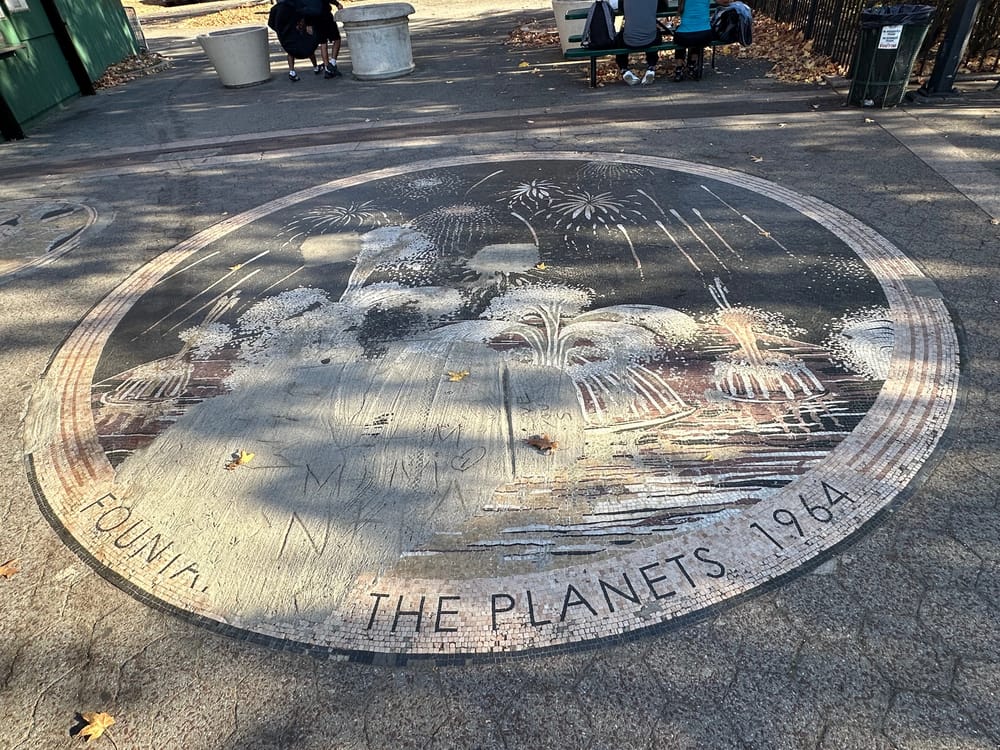
The Parks Department attributes the significant deterioration of the mosaics to natural weather conditions. Because loose and missing tiles can lead to trips and falls, the works of art have been deemed a safety hazard. Patchwork cement repairs are evident on all the medallions, with graffiti marks, footprints, and tire tracks visible.
The Department says a mosaic art studio determined that the works were "not salvageable" after an analysis, and recommended against recreating them, "as in-ground mosaics cannot sufficiently withstand environmental conditions." The plan is to remove the mosaics and replace them with pavers similar to those in the surrounding plaza to create a level walking surface.
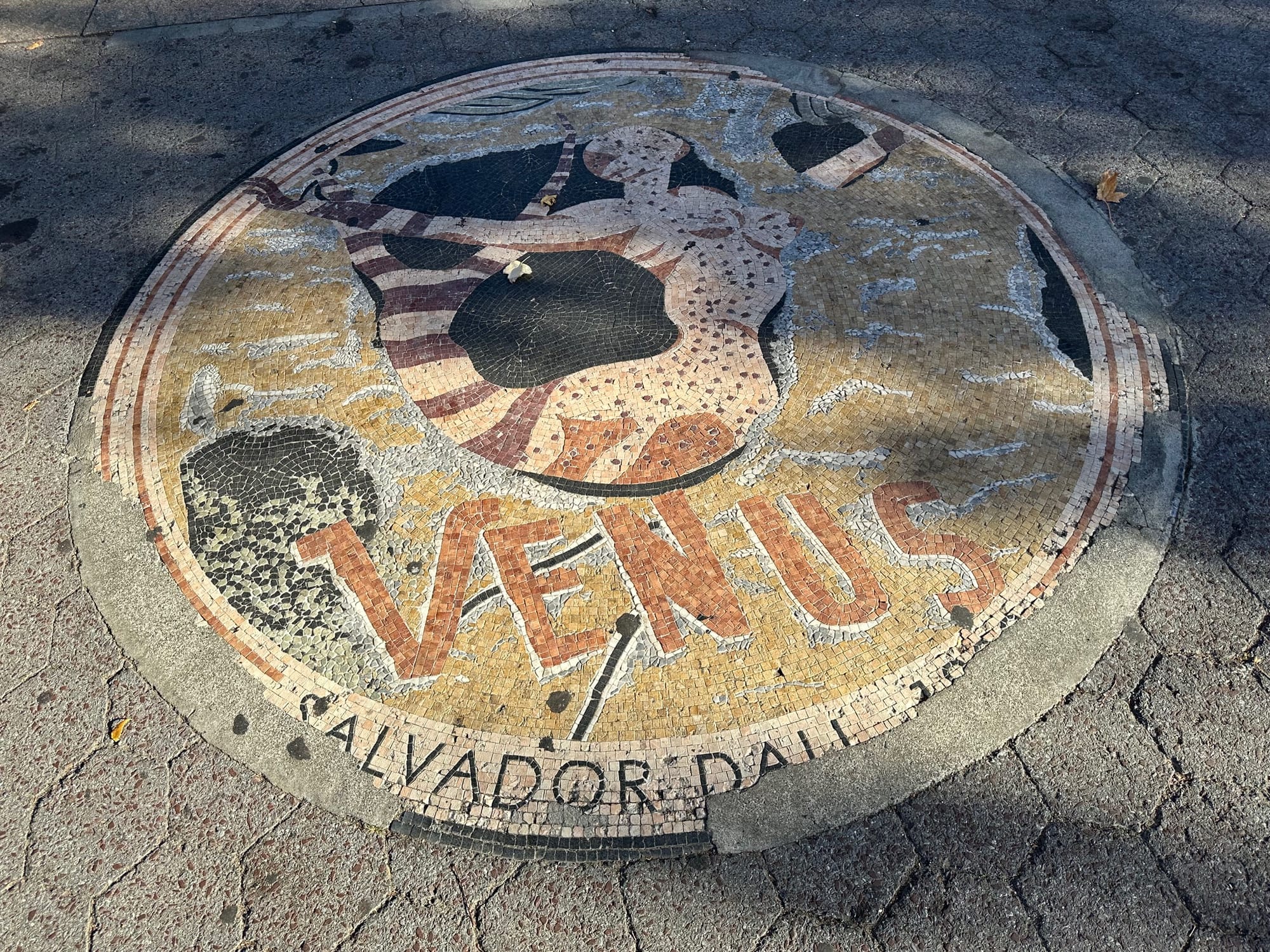
Installed in 1997, the Passarelle Plaza Mosaics depict various elements of the two World's Fairs in Queens. It is believed that 10 of the original mosaics have been lost. Two have been covered by cement and five are still visible. Elsie The Cow (1939), a smiling portrait of Robert Moses by Andy Warhol (1964), the New York Hall of Science and Rocket Park (1964), Fountain of Planets (1964), and Venus by Salvador Dali (1939) make up the five that have survived.
"My favorite of the five, honors the work of the legendary Salvador Dalí who designed the 'Dream of Venus' pavilion for the 1939 Fair," says Ray Victor, a Queens native and Untapped tour guide who leads our World's Fairs tours, "Like many of my guests, I have been amused by the Andy Warhol inspired mosaic of Robert Moses. And a smile was brought to my face by the Elsie the cow mosaic which recalls the children who enjoyed that magnificent fair with their families almost a century ago, children whose innocence would be shattered only two years later as America entered WWII."

Known missing medallions include mosaics depicting a work called EAT by Robert Indiana (1964), the Billy Rose Aquacade (1939), the New York State Pavilion (1964), New York City Pavilion (1939) (now the Queens Museum), and two medallions about the Westinghouse time capsules from each fair (1939 & 1964).
The mosaics are the last vestige of many World's Fair structures that have already been lost. The Aquacade was demolished in 1996, though you can still find a few remnants in the park. Dali's Dream of Venus theater was taken down in 1940 along with the majority of pavilions built for the 1939 fair. Some elements, like Robert Indiana's EAT sculpture, which was affixed to the facade of Theaterama during the 1964 fair, found homes outside New York (in this case at the Farnsworth Art Museum in Rockland, Maine).
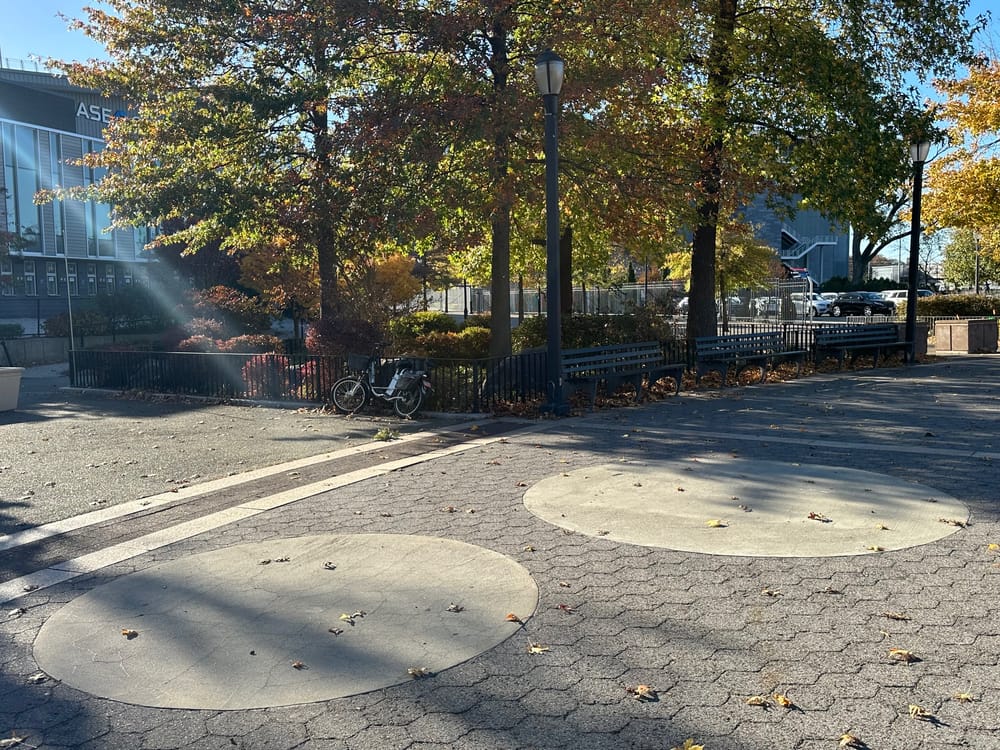
The Passarelle Plaza Mosaics are not the only mosaics at the former fairgrounds. The floor of the New York State Pavilion's Tent of Tomorrow was once covered by a terrazzo map of New York State that stretched over 9,000 square feet. Made of 567 terrazzo mosaic panels, the map depicted every Texaco gas station in the state. When the Pavilion’s roof was removed in the 1970s, the Texaco map—like the mosaic medallions—was left exposed to the elements and quickly fell into a state of decay. Only a few tiles remain preserved today.
Michael Perlman—a 5th generation Forest Hills resident, author of Legendary Locals of Forest Hills and Rego Park, Chairman of Rego-Forest Preservation Council, and longtime member of the Four Borough Neighborhood Preservation Alliance—has been campaigning to save the Passarelle Plaza mosaics since 2022. He recently teamed up with Gloria Nash, author of the forthcoming World's Fair book, Looking Back At The Future, and Kevin Walsh of Forgotten New York, for his latest push to preserve the art.
Earlier this month, Perlman sent a proposal to Flushing Meadows Corona Park Administrator Anthony Sama that included an offer from a salvage expert willing to carefully remove the mosaics at no cost to the Parks Department. "Furthermore, they would be restored off-site before finding a future home, and the Parks would not have to pay for that either," Perlman explains, "Passion and teamwork are inspiring our generous proposal."
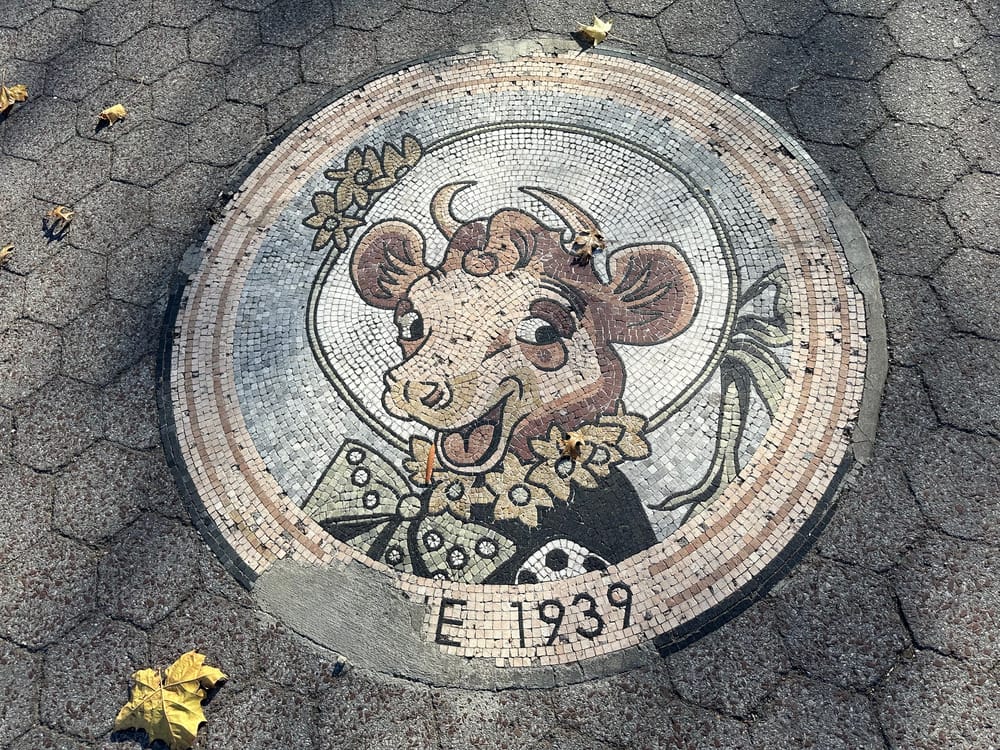
What would happen to the mosaics after they are removed is still unknown. "We envision the mosaics being on display in a public or private space, either outdoors or indoors, where they can be readily accessible for the public’s continued appreciation and education," Perlman says, "Our first priority is taking them out of needless harm."
While Perlman waits for a response to his proposal, the Parks Department has committed to partnering with the Alliance for Flushing Meadows Corona Park to ensure that the Alliance’s Art in the Park Grant will prioritize Dinkins Circle as a location for at least one public art installation each year the grant is funded. The grant supports two local artists by awarding $10,000 to display a yearlong installation.
"New York is home to an army of amazing artists who could truly breathe new life into these wonderful reminders of our city’s past," says Victor, "I say to our city leaders, let them."
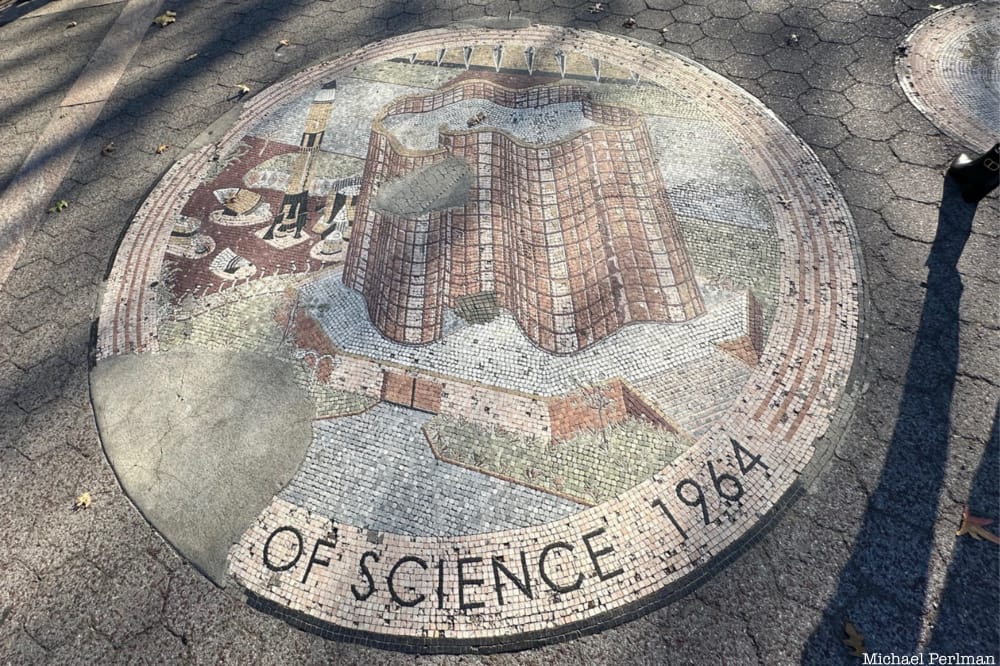
"They feel like windows into the World’s Fairgrounds," says Perlman of the medallions, "They celebrate our local and international culture, and architecture from the Fairs, and also offer a lesson in art, history, and craftsmanship."
Victor echoes Perlman's sentiment, "Not that long ago, Grand Central was almost the victim of architectural homicide when development efforts in the 1960’s and 70s threatened to destroy that magnificent centerpiece of our city. I am sure many might say preserving the mosaics in question is not the same as saving Grand Central, but we should all realize that saving the artistic and cultural history of our city, like every journey, has a first step."

Didn't make it to the 1939/40 or 1964/65 fairs? Here's your chance!
See the medallions on our next Remnants of the World's Fairs Tour and read about physical remnants you can still see from 1964-65 and 1939-40!
This post contains affiliate links, which means Untapped New York earns a commission. There is no extra cost to you and the commissions earned help us support our mission of independent journalism!
.
Subscribe to our newsletter